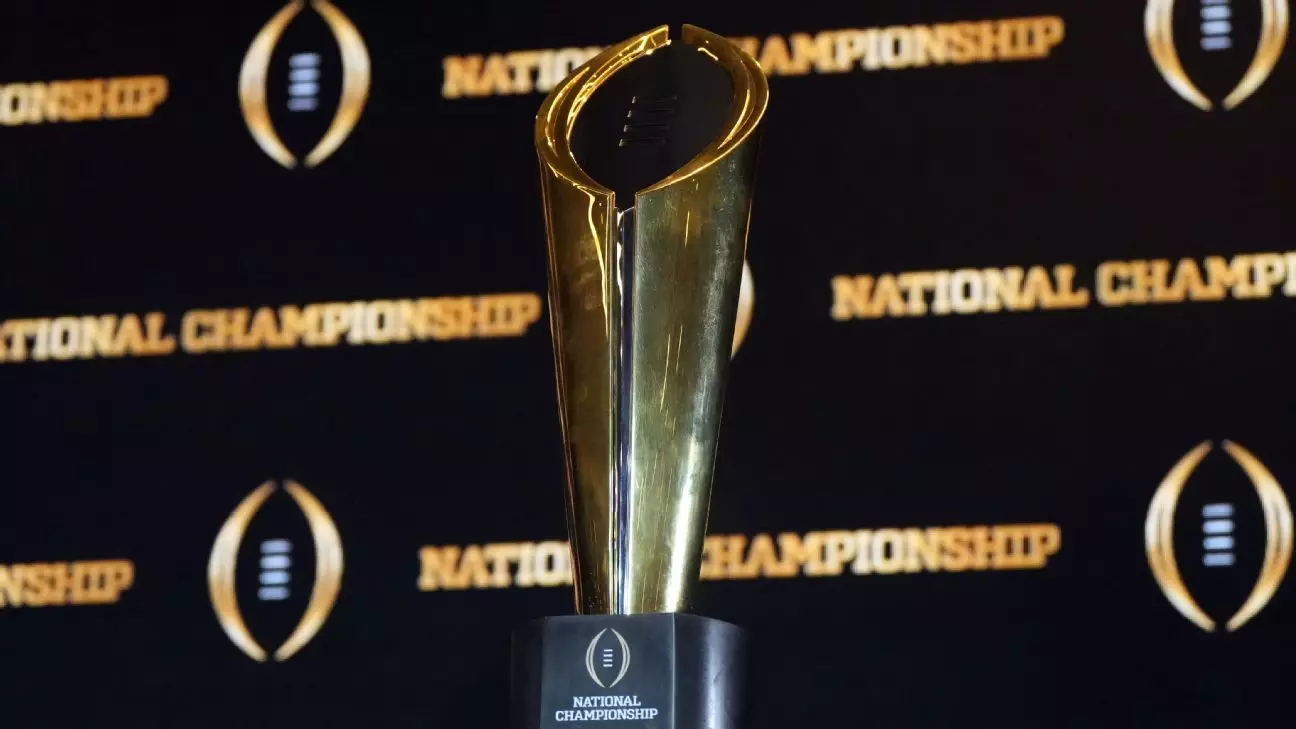The College Football Playoff (CFP) system, designed to crown a national champion in college football, has faced significant challenges in scheduling games, particularly in light of tragic events and the dynamic nature of college football logistics. The recent decision not to alter the dates and times of the Goodyear Cotton Bowl Classic and the Capital One Orange Bowl epitomizes the complexities involved. SEC Commissioner Greg Sankey’s request for a schedule change was ultimately denied, creating a fresh wave of discussion regarding fairness and the implications for student-athletes involved.
On the surface, the refusal to change game schedules may appear as a straightforward logistical decision. However, the context surrounding it adds layers of sensitivity and concern. Following a tragic pickup truck attack in New Orleans that left numerous casualties, the scheduling of the Allstate Sugar Bowl had to be adjusted for safety and security reasons, which led to discussions about the domino effect on subsequent games. This unfortunate series of events has forced stakeholders to reconsider not just their immediate responses but also their long-term planning to ensure the well-being of everyone involved.
Sankey’s remarks on the Paul Finebaum Show reflected an awareness that the fallout from such tragedies can ripple through logistics, affecting how teams prepare and compete. For instance, with Notre Dame’s earlier victory over Georgia, their follow-up in the Capital One Orange Bowl against Penn State means a tighter turnaround compared to Penn State’s extended rest following their Fiesta Bowl triumph. The inherent inequality in preparation time raises questions about competitive fairness—a critical aspect of the sport.
In the complex maze of college football, it is clear that many factors influence decision-making. Rich Clark, the CFP executive director, highlighted that changes to established schedules could disrupt not only the teams but also the fans who plan their attendance around these events. When games are tied to specific dates, fan arrangements, and community events, the potential repercussions of a schedule shift can ripple outward.
Sankey emphasized that it is not merely an SEC issue, but a concern that impacts both teams in question. While he proposed that they consider options for change, it became evident that the priority remained on meeting current logistical needs rather than making alterations that might benefit one team at the expense of another. Given that both Texas and Ohio State faced their own scheduling challenges, it suggests an intertwining of multiple stakeholders’ interests that complicates straightforward resolutions.
Looking Ahead: Adaptation in the Face of Change
As Sankey noted, college football functions on the principle of adaptation. Both teams and their coaches are accustomed to adjusting strategies based on unforeseen occurrences during the season. Thus, the call for flexibility resonates beyond scheduling disputes, urging players and coaches alike to embrace adaptability as a core tenet of their preparation.
This situation serves as a reminder that the structures surrounding college sports are not immune to external influences. As tragedies unfold, the priorities must shift—not only for organizational committees but also for the attendees and communities involved. The willingness to adapt is a crucial skill not just for athletes on the field but also for those managing the logistics of the sport.
The decision to maintain the original schedule for the Goodyear Cotton Bowl Classic and the Capital One Orange Bowl highlights the complexity of college sports logistics, especially when intertwined with external factors such as a tragic event. While fairness in preparation is paramount to the integrity of competitive sports, the reality is that many players, coaches, and fans must remain vigilant and flexible amid necessitated changes. As college football continues to evolve, it is this adaptability that will ultimately define its progress and resilience in the face of adversity.

Leave a Reply